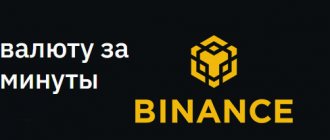Fiat or fiduciary money is a classic means of payment, ordinary paper bills, money on our bank cards that we use every day (US dollar, euro, ruble, yuan, etc.). Fiat currency is a means of payment accepted by the state at the legislative level.
"Let it be so!" – this is how the word fiat is translated from Latin. It also means “instruction” or “decree”. In another way, fiat money is also called fiduciary (fiducia in Latin means “trust”), symbolic or credit.
Fiat has no intrinsic value and no reserves. These assets are secured only by people’s trust in the state and the level of the state’s authority in the world. Until 1973, fiduciary means of payment were backed by gold, that is, behind each banknote there was a certain amount of precious metal from the state’s gold reserves.
They come in different forms:
- paper banknotes;
- metal coins;
- non-cash money.
The government is responsible for issuing fiat currencies. It also sets their value and indicates to citizens that they must use them - pay taxes in a given currency, buy and sell goods and services for this money within a particular country.
In simple words, fiat is any legal national currency of any state - ruble, dollar, euro, yen, yuan and hundreds of other smaller currencies.
The most popular fiat currencies in the world
The world's reserve currency is certainly the US dollar, but the list of the most popular and used currency assets also includes the Euro and Pounds.
- U.S. dollar . It is legal tender, but only $1, $2, $5, $10, $20, $50, $100, $500, $1,000, $5,000 and $10,000 notes are in circulation. Moreover, coins of different types and years of issue. Banknotes made before 1928 are also valuable.
- Euro is the currency of the European Union countries . There are currently seven denominations of banknotes in circulation: 5, 10, 20, 50, 100, 200 and 500 euros. All of them have a single thematic and style solution. Depending on the denomination, they differ in size and color. The images on the money reflect the eras and architectural styles of Europe.
- Pound sterling is the currency of Great Britain . It is worth noting that sterling was previously made from silver, and banknotes appeared only at the end of the seventeenth century.
Fiat history - evolution of money
According to security, money is divided into 2 types - fiat and real.
| Name | Full or incomplete synonyms | Character traits | Example |
| Fiat (from Latin fiat, “let it be!”, for example, fiat lux – “let there be light”) | Symbolic, credit, unsecured, paper. Fiat money is also called fiduciary from lat. feducia, "trust". | Their purchasing power is based solely on trust in the issuer (the state). The nominal value of such money does not depend on its material or on the security deposited in the bank. In simple terms, fiat money is guaranteed by the state. | All modern paper and electronic money (dollars, euros, rubles, hryvnias) are examples of fiat money. |
| Valid | Secured, real, representative, change, commodity, maternity leave. | They have their own value, for example, they are made of precious metals, or have an equivalent backing, for example, they can be exchanged for gold at a bank. | Secured money was in use in various countries until the end of the 19th century. For example, the gold ruble, which was issued in Russia during the time of Nicholas II. Such a coin was equal to 0.774234 g of pure gold. For a long time, banknotes were in use, with which a person could go to the bank and receive the equivalent in gold. |
In the ancient world, many types of commodity money were used for exchange, loan or gift:
- shells and pearls;
- animal skins;
- live cattle and other shelf-stable food, honey;
- pebbles, etc.
Some of these types of money had practical value, such as skins that could be used to make clothes or slaughter livestock to feed a family. And some, in particular pearls, were primarily a means of trade.
It is interesting that it was not science, religion or poetry that led to the emergence of writing among mankind in the first place, but accounting. It was necessary to count money, and there were more and more calculations. Memorizing so much data became too difficult, so people started taking notes. The first written monuments were discovered in China, and they date back to the 4th millennium BC.
Starting from the 2nd millennium BC. Money made of iron, silver, gold and other metals is in use. First there were arrowheads, fragments of swords and the like.
The first metal coins appeared in China in the 12th century. BC. as a domestic means of payment. They were made from a bronze alloy.
The oldest coins in Europe consisted of an alloy of silver and gold and were issued in Lydia by King Ardis around 685 BC. By the end of the 19th century. all developed countries already had coins in circulation and used the gold standard.
Paper money appeared in the 1st century. AD the following reasons:
- Mining precious metals for coins was expensive.
- The coins could easily be counterfeited; the purity of the alloy had to be controlled.
- Carrying a large number of coins with you was inconvenient.
The first paper money was also invented in China, in 812, and it was a certificate that stated how much money the merchant left in the treasury when going on a trip. The English expression bank note, a record from a bank, very accurately describes this process. Instead of handing over real money, the merchant could give away his certificate.
Chinese traders brought the idea of paper money to Europe, and the Swedes and British began issuing banknotes in the 1660s. In 1769, Russian Empress Catherine II carried out a reform and legalized paper banknotes.
Humanity finally switched to fiat money in the 1970s, when the US Bank refused to exchange its currency for gold reserves.
Introduction
Electronic money appeared relatively recently, but almost immediately began to play a significant role in the life of every modern person, as they have many advantages.
Among the advantages, for example, one can highlight the low cost of emissions. Electronic money, like non-cash money, does not lose its qualities over time. There is no need to organize physical security for money, and protection from theft and counterfeiting is ensured by cryptographic means. The use of electronic money is increasing every year and makes online shopping, fast international money transfers, and anonymous transactions possible. After reading this article, you will learn about a brief history of the emergence of electronic money, their types, as well as the cryptographic principles that make their use possible.
Electronic fiat money
In the last two decades, fiat has been represented mainly by electronic money. As statistics show in the world today, only 8% is cash. The rest is digital money in bank accounts.
Countries on different continents are moving towards a cashless society, some faster and some slower.
However, their difference from cryptocurrencies is again that they are centralized - these electronic money belong to the state, and in some cases to private companies that set their own rules. They may cancel or freeze transactions upon request.
To use electronic money, identification is required - providing personal information, uploading documents, if the user wants to gain full access to all functions of the system.
In addition to money in bank accounts, there are network private currencies, for example - WebMoney, Yandex.Money, Qiwi. As well as network fiat money – PayPal and GlobalMoney.
Cryptocurrency exchanges with fiat money
Cryptocurrency exchanges are trading platforms that allow trading of virtual currencies . The functions of exchanges make it possible to exchange one digital money for another or for fiat money. For users who want to start working with digital means of payment, cryptocurrency exchanges offer quite a wide range of opportunities. Recently, exchanges have begun to actively create a large-scale ecosystem, the main purpose of which is to work with cryptocurrency assets.
The opportunity to exchange fiat for digital means of payment and back is provided by cryptocurrency exchanges and specialized exchange services . Popular platforms that work with fiat money include Bitfinex, Kraken, Bitstamp, Gemini and Livecoin exchanges.
What determines the value of fiat currency?
Fiat money is also called unsecured money. Why? Yes, because this money is currently not backed by gold or other precious metals. Previously, a specific amount of gold was provided for each banknote. Fiat came into circulation as an alternative to commodity-backed currencies.
Today, all that fiat rests on is the trust of people and the guarantees of the state. The state declared that it is legal tender on its territory and citizens are obliged to obey. We know that we can go to a store and exchange fiat banknotes for the goods we need, and get the services we need for them.
The value of fiat money lies only in the fact that the government of the country endowed it with such value. As a result, when trust in government institutions declines, fiat currency depreciates.
The exchange rate of fiat currencies may fluctuate depending on the economic situation in the country to which they belong. Any widespread shock could cause their value to collapse. Hyperinflation completely destroys confidence in such currencies. Prices are rising, the government is forced to print new banknotes, and the result is a country of millionaires - only absolute beggars, since millions cannot buy practically anything valuable.
The price of a currency is based on what it can be used for, not because cash has any value: its material is worth less than its face value. This money can be used in the state because it is based on trust between the issuer, the holder and those who receive it. Supply and demand can be freely regulated by government and the market.
If trust in a currency (and the government behind it) is lost, it will lose demand, causing its value to fall. The value of fiat is not directly tied to a physical asset, such as a precious metal or an item that someone wants.
For example, when the Zimbabwean government began to issue more money, the situation led to hyperinflation. The state was unable to support the course. Or the situation with the fall of the ruble: the difficult geopolitical situation is reflected in its price. Compared to the currencies of other countries, the ruble is losing value.
Description
Fiat is any currency created and regulated by a government that inherently has no intrinsic value.
While valuable stocks like gold are considered money due to their intrinsic value, fiat currency has its purchasing power dictated by a regulatory authority.
Fiat has no useful value beyond what it dictates (that's why you need a different currency every time you enter another country - your old one becomes practically worthless!).
But all its value is supported by industry and government. This factor means that a Fiat can lose its value if it is not maintained properly.
TOP 5 global problems of fiat money
- Inflation. Every year, all fiat (fiduciary) money is subject to depreciation , which means their virtually uncontrolled release by the National Banks of almost all countries of the world (in the USA - the Federal Reserve System, in the Russian Federation - the Bank of Russia, in Ukraine - the NBU, etc.), because Budget expenses always exceed its revenues. Jumps in exchange rates on the Forex market only determine which of the fiat currencies (USD, EUR, JPY, CHF, CAD, AUD, NZD, NOK, SEK, RUB, UAH, BYN, etc.) are currently being “printed” faster than all others. In response, the top officials of the states themselves always blame not themselves for the fall in the prices of their national currencies, but traders, investors and brokers involved in “currency speculation” on the stock exchange and forex.
- The collapse of the “gold standard” of the Bretton Woods system in 1971, when the United States unilaterally stopped issuing the gold it held in exchange for US dollars at the request of the central banks of other countries in the world. As a result, from January 8, 1976 to this day, the Jamaican currency system has been in effect, according to which gold and foreign exchange reserves (gold and foreign exchange reserves), in addition to gold itself, began to include the US dollar, pound sterling, euro (formerly the German mark), Swiss franc and 2016 partly Chinese yuan.
- The leading countries of the world live in debt, which is growing exponentially and for most countries of the world... several times higher than their annual budget. De facto, these countries are bankrupt, as is their national (fiat) money. The size of government debt in fiat money threatens the collapse of the entire global financial system. By the way, among the leaders - the country's debtors - are the guarantors of gold and foreign exchange reserves of fiat money of the rest of the National Banks of the world (Japan with a debt of 250% of its GDP, the USA, Great Britain, Canada, the EU).
- Continuing the policy of most countries of the world to “sit on the credit needle” . How could it be otherwise for populist politicians who promise to “increase wages and pensions”, increase subsidies, etc. due to further devaluation of fiat money in their countries.
- The population's disappointment in investments . In an attempt to save the earned fiat money, a significant part of the world’s population tries over and over again unsuccessfully to “invest” it in securities, investment funds, ETFs and hedge funds, mutual funds and PAMM accounts of various exchanges, ultimately losing them, according to statistics, from 72% up to 97%.
Financial market regulators
The process of emission and subsequent circulation of fiat money is controlled by government agencies . Financial market regulators are considered to be bodies vested with a sufficient number of rights and powers and engaged in regulating and regulating the activities of market entities. In most cases, regulators have monopoly power in the market, they can lobby for bills and make decisions to suspend or liquidate unscrupulous participants.
Major financial regulators of the world: NFA, CFTC and SEC (USA), FCA (UK), CySEC (Cyprus), FINMA (Switzerland), (Sweden), FSC Mauritius (Malta), PFSA (Poland), MiFID requirements (European Union), BaFin (Germany), CNMV (Spain), ACPR and AMF (France), FCMC (Latvia), FSAEE (Estonia), CSRC (China), SEBI (India), FSCL (New Zealand), MAS (Singapore), SFC ( Hong Kong), ASIC (Australia), IFSC (Belize), FSC (Mauritius), Botswana IFSC (Botswana), FSB (South Africa), Dubai FSA (Dubai, UAE), Bank of Russia, FFMS (Russia), ISA (Israel), CMB (Turkey), Tadawul (Saudi Arabia), FinCom (China), NCPFR (Ukraine), AFSA (Kazakhstan), SET (Thailand).
Cryptocurrency as an alternative to fiat currencies
Many experts argue that fiat money has already become obsolete. They were replaced by cryptocurrencies. But can they become a worthy replacement, or is this just a temporary fashion that will quickly become obsolete?
Before drawing any conclusions, you should find out what cryptocurrency is. So, this is a type of digital money that is created and works thanks to cryptographic methods. These are decentralized systems that are based on blockchain technology and do not depend on anyone. They are versatile and unique. In addition, the cryptocurrency is open, so information about transactions is available to everyone, which does not exclude the anonymity of cryptocurrencies.
Knowing what fiat is, it is not easy to understand the essence of cryptocurrency. This is something radically different. The emergence of cryptocurrencies was even called a new financial revolution, which is not surprising, because after the appearance of Bitcoin (the first cryptocurrency), the financial world changed forever, dividing not only into fiat and non-fiat money, but also into cryptocurrencies.
In 2009, the world's first cryptocurrency, Bitcoin (BTC), was released. If we omit all the technical nuances, we can say that Bitcoin is an electronic payment system that uses its own coin with a limited emission and works through its secure decentralized network. It eliminated people’s complete dependence on the bank, as it made it possible to bypass this intermediary by making transactions from subscriber to subscriber via the blockchain, simultaneously mining another coin.
Key differences between fiat and cryptocurrency
Cryptocurrencies appeared after the development of blockchain technology in 2009, which made it possible to improve the technology for storing data about user funds. Despite the differences in the methods of storing and transferring money, digital currencies have similarities to paper ones.
Availability of material analogues
Fiat can be in the form of bills or coins if you use an ATM to withdraw them from your card.
Cryptocurrencies cannot be touched; purchases can only be paid for on the Internet. This is considered a disadvantage of digital coins - you cannot access them without having access to an electronic wallet or account on the exchange.
Centralization
The national currency belongs to the state and can only be issued by the central bank. Special services determine the size of the commission, the possibility of conversion, etc. The population does not affect the cost of banknotes.
The issue of cryptocurrency is not controlled by government agencies. Platform users can mine coins themselves and spend them only on resources that accept digital money. Information about completed transactions is not verified by banks and law enforcement agencies. Due to the lack of centralized control, exchange rates change depending on the demand for coins, which makes it unstable.
Security
The similarity between fiat and digital currencies is that they are not backed by anything. The fiat exchange rate depends not so much on GDP as on the actions of the state and its economic policy. Cryptocurrencies are funded by investors from among network users, but their value fluctuates only under the influence of demand for coins.
Inflation
A central government bank can issue many notes, reducing the value of a particular national currency. Inflation can lead to its depreciation. Cryptocurrency is more reliable because it is not subject to inflation.
Anonymity
When making transactions with fiat, the buyer cannot keep his data secret. To withdraw cash from the card, you must use an ATM; data on the withdrawn amount will be stored in the bank’s database. When paying in a store with paper bills, his face will be visible; using data from a video camera, you can confirm the purchase. If you use a plastic card when making purchases, information about them will also be sent to the bank.
When conducting transactions using cryptocurrency, user data remains in the system, but in encrypted form. Platform owners do not provide information about law enforcement transactions. There are networks in which even their creators cannot find out data about what is happening on the network. Blockchain technology ensures a high level of anonymity.
Safety
It is not safe to store savings in both fiat and cryptocurrency. There are those who want to take over other people's money. They come up with different ways to do this: steal wallets, install devices on ATMs that remember numbers and codes of plastic cards, hack accounts on exchanges and electronic wallets. Blockchain technology reduces the risk of hacking to 0.001%, but the likelihood of losing your funds remains.
Convenience
To open a bank account, you need to come to its branch, fill out an application, pay fees and wait until all the documents are completed. After this, you will be able to receive a plastic card, with which you can make purchases using the accrued funds.
It’s easier to open an e-wallet: you need to go to the official website and fill out a form. This will take a few minutes. It is easier to pay with cryptocurrencies, but they cannot yet be used in all trading establishments.
Popularity among the population
Every country in the world has a national currency. Fiat money is more in demand when making transactions. Even in order to use cryptocurrencies to purchase some goods and services, you need to convert them into fiat.
Cryptocurrency may eventually replace fiat money, as it is more convenient to use for payments. For this, there is not enough legislative basis and approval of the use of digital coins from the governments of different countries.
Advantages and disadvantages of cryptocurrencies and fiat money
Pros of cryptocurrencies:
- The absence of a central server , the hacking of which would lead to the loss of money by millions of people. Cryptocurrencies are based on the idea of decentralization. Copies of the blockchain reside on many computers around the world, and in order to make changes to the blockchain, majority consent is required.
- Transaction transparency . Information about all payments is forever stored in the blockchain and is available for anyone to view.
- Cryptocurrency is not subject to government or banking structures , although they are trying very hard to gain influence over it. The absence of a link to banks will protect the position of the crypt even in the event of a global default.
- Technical impossibility of counterfeiting.
- Resistance to inflation , since the issue of most cryptocurrencies is limited. For example, Bitcoin has a maximum number of coins of 21 million, which will be mined by 2140.
- Anonymity . Even though cryptocurrency addresses and transaction amounts are publicly available, it is impossible to know who exactly owns the wallet. To use cryptocurrency, you do not need to disclose your personal information, such as your name or passport details.
Disadvantages of cryptocurrencies:
- The value of coins depends only on the relationship between supply and demand . Hence the high volatility, sudden changes in exchange rate, and the difficulty of forecasting. On the other hand, volatility often plays into the hands of traders in generating income.
- It is very easy to lose access to a crypto wallet - just forget your password or fail to save the seed phrase or private key to restore it. If these three conditions are met, then you can forget about the money on your balance sheet.
- It is impossible to cancel a transaction or return funds sent to an incorrect address.
Pros of fiat money:
- More noticeable stability, no strong volatility . Despite the growing popularity of cryptocurrencies, fiat money is still more in demand both in life and on currency exchanges. They are traded by a huge number of people, which makes exchange rate fluctuations more predictable.
- Losing a plastic card or forgetting your PIN code does not mean losing money . The finances are still in the bank, where you can easily withdraw them and order a new card, having your passport in hand.
- Bank transactions are returnable . In case of an error, it is possible to cancel the transaction if fraud is proven and the bank considers the reasons compelling.
- Fiat money is widespread and accepted everywhere: in shops, restaurants, taxis, airports. We are still several decades away from the time when it will be possible to buy cucumbers on the market for bitcoins.
Disadvantages of fiat money:
- Centralization . Most projects working with fiat are based on a central server. By hacking it, the hacker gains access to user accounts. Such situations happen with enviable regularity.
- Inflation . The state is forced to regularly print new money, which leads to its gradual depreciation.
- Lack of anonymity . To open a bank card or account, you must provide the bank with all your personal information, from your last name and passport details to your place of work.
Thus, both means of payment have advantages and disadvantages. At the moment, they complement each other, and cryptocurrency cannot yet exist without fiat. A key example of this is the fact that exchanges where it is possible to buy or sell cryptocurrency for fiat money are very popular:
- Binance
- Huobi
- Exmo
Will Bitcoin replace fiat money?
Today it is definitely difficult to answer this question. Bitcoin is still at the initial stage of its development; it still has many problems to solve, such as transaction speed, scalability, and high volatility.
Although many stores and services accept Bitcoin today, BTC is still very far from being widely accepted.
Nevertheless, such prominent figures of modern business as the head of Twitter Jack Dorsey, the co-founder of Apple Corporation Steve Wozniak and many large investors express the hope that in the next decade Bitcoin has every chance of becoming, if not the only global means of payment, then the native currency of the Internet.
Where can I exchange fiat money for Bitcoin and other cryptocurrencies?
For a safe and convenient exchange of fiat for cryptocurrencies, we have prepared a rating of the most reliable and popular cryptocurrency exchanges that support the deposit and withdrawal of funds in rubles, hryvnia, dollars and euros.
The sites with the highest cash turnover are the most reliable. For several years now, Binance has been the largest cryptocurrency exchange in the world. The Binance platform is the most popular crypto exchange in the CIS, as it has maximum trading volumes, minimum commissions and supports transfers in rubles from Visa/MasterCard bank cards and payment systems QIWI, Advcash, Payeer.
Especially for beginners, we have prepared a detailed guide: How to buy Bitcoin on a crypto exchange for rubles?
| # | Cryptocurrency exchange | Official site | Site assessment |
| 1 | Binance (Editor's Choice) | https://binance.com | 9.7 |
| 2 | Huobi | https://huobi.com | 7.5 |
| 3 | Exmo | https://exmo.me | 6.9 |
| 4 | Yobit | https://yobit.net | 6.3 |
| 5 | OKEx | https://okex.com | 6.1 |
The criteria by which the rating is given in our rating of crypto exchanges:
- Reliability of operation
- stable access to all functions of the platform, including uninterrupted trading, deposits and withdrawals of funds, as well as the period of operation on the market and daily trading volume. - Commissions – the amount of commission for trading operations within the platform and withdrawal of assets.
- Reviews and support – we analyze user reviews and the quality of technical support.
- Interface convenience – we evaluate the functionality and intuitiveness of the interface, possible errors and failures when working with the exchange.
- Features of the platform are the presence of additional features - futures, options, staking, etc.
- The final score is the average number of points for all indicators, determines the place in the ranking.
7) Implementation of blind signature
There are different protocols for implementing blind signing. For example, the mathematical apparatus of elliptic curves, bilinear pairings, and braid groups are used. Due to the fact that the introduction of the reader to the course of the matter is quite extensive and the general principle remains the same (was presented above), I will allow myself to omit the description of these implementations. As part of the integrity of the article, I will give an implementation based on the RSA protocol, since this implementation is the very first and was carried out by Chaum.
Implementation of blind signing using the RSA protocol
Let us demonstrate the implementation of a blind signature using the canonical example of Alice and Bob for cryptography. Let (p, e) be Bob’s public key, p be the modulus used for calculations, and e be the public exponent of the key. m is Alice's message that needs to be signed.
- Alice chooses a random masking factor r that is coprime to p (numbers are coprime if their greatest common divisor is 1) and calculates:
2. Alice sends m' to Bob.
3. Bob, using his private key d, calculates:
4. Bob sends s' to Alice.
5. Alice removes her disguise and receives a message signed by Bob:











